Navigating the Waves: Insights from the Water Careers Event

The Energy, Construction, and Utilities (ECU) Advisory event offered a view of water-related career opportunities within the region, delivering valuable perspectives for program development in the field. The event highlighted the opportunities and the challenges of an imminent skill shortage.
Ramzi Mahmood, Director of the Office of Water Programs (OWP) at Sacramento State, and Patrice McElroy, Deputy Administrative Officer from Valley Water, were keynote speakers and shared impactful presentations on the landscape of workforce development in the region, the Labor Market Data presented by the Center of Excellence showed signs of growth, with estimates of an increase from 7,150 positions in 2022 to an anticipated 8,003 by 2027, marking a notable 12% expansion in the region.
However, amidst this positive outlook of job growth, tackling the worker shortage was a predominant theme. Mahmood spoke on the forthcoming wave of retirements over the next 5-10 years, compounded by a nationwide hiring squeeze, presenting challenges in filling critical positions. The keynote stressed the inadequacy of relying solely on chance to attract students to water-related careers. Instead, Mahmood advocated for a comprehensive strategy encompassing early education, specialized training programs, hands-on experiences, recognized certifications, and pathways to successful career attainment. The employer panel echoed similar sentiments. Specifically, Samantha Blackwood from the Department of Water Resources (DWR) explained that one in ten DWR employees are currently eligible for retirement, and in five years the numbers will jump to 20 percent, or one in five, and in 10 years roughly one of three DWR employees are eligible for retirement.
In response to this anticipated shortage, panelists advocated for strategic investments in internships and grant programs. Additionally, training institutions and employer agencies can collaborate to provide practical experience and financial support to prospective employment candidates, laying the groundwork for a skilled future workforce.
As the dynamics of the regional water job market evolve, a focus on planning, education, and investment becomes imperative. Insights gathered from events like this advisory serve as an opportunity to share strategies and networks to navigate this shifting industry landscape. Additional information including the full event recording and presentation materials can be found here.
Air Quality and “Exceptional Events” – A Primer
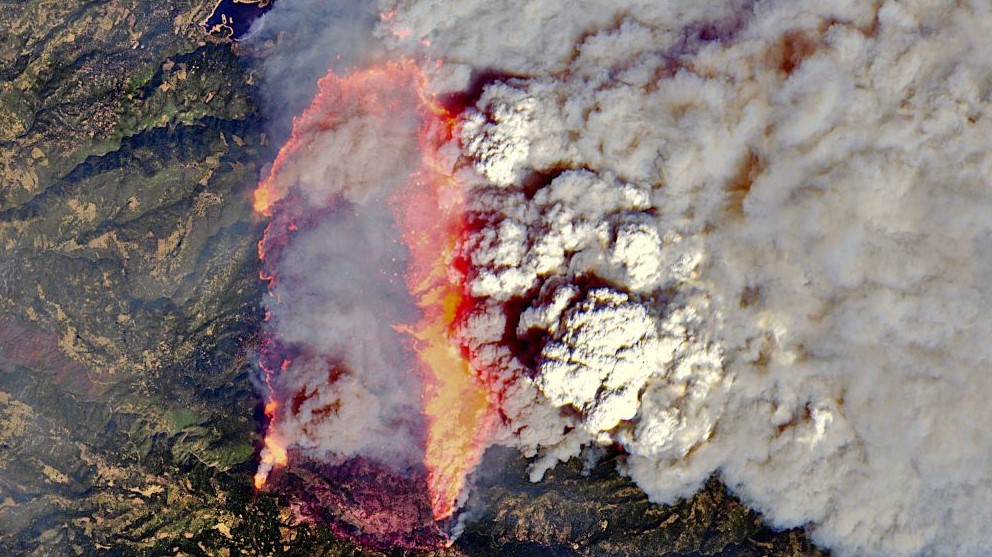
For more than 35 years, the Cleaner Air Partnership (CAP) has been the Sacramento region’s most prominent voice focused on advancing partnerships between local government, industry, and environmental groups to improve air quality. Key to our mission is the identification of win-win-win opportunities for collaboration between these sectors.
Some of our coalition “wins” have included successful advocacy for legislation in 1997 to require the Bay Area to implement NOx reduction in their smog check program (which was disproportionately impacting our region), establishing a permanent CARB Board seat for a Sacramento region representative in 2012, and the designation of South Sacramento-Florin as a first-round AB 617 environmental justice community in 2018.
Public education is particularly important as we think about issues that impact public health – simplifying complex air quality topics is a core Cleaner Air Partnership activity as part of our quarterly Luncheons, Technical Advisory Committee meetings, and related efforts.
Last month, our region’s largest public radio station, Capital Public Radio, published several pieces related to the “exceptional events rule” utilized by air quality regulators across the nation:
- Insight: Loophole Lets Air Regulators Wipe Pollution From Records
- What is the exceptional events rule? The loophole letting US regulators wipe air pollution from the record
- Revealed: how a little-known pollution rule keeps the air dirty for millions of Americans
The best definition of “exceptional events” comes from the San Joaquin Valley Air Pollution Control District (SJVAPCD): “Exceptional events are unusual or naturally occurring events that can affect air quality but are not reasonably controllable using techniques that tribal, state or local air agencies may implement in order to attain and maintain the National Ambient Air Quality Standards (NAAQS). Exceptional events may include wildfires, high wind dust events, fireworks, prescribed fires, stratospheric ozone intrusions, and volcanic and seismic activities.”
All of the news articles question the value of the exceptional events rule to public health, purporting that the rule “wipes air pollution from the record.” Put simply, this is inaccurate information that mixes up different air agency activities, resulting in a false characterization of what the rule actually does. These processes are described below:
- Activity #1: Air Quality Management: At its core, air quality management in the United States means implementation of the Clean Air Act, “the comprehensive federal law that regulates air emissions from stationary and mobile sources.” The Act sets policy interventions such as emission standards for anticipated and controllable sources of pollution. By definition, an “exceptional” event is unanticipated and not amenable to policy controls.
- Activity #2: Federal Air Quality Monitoring: The purpose of air agencies conducting Federal air quality monitoring is to track the progress of regulatory actions and pollution reduction measures taken by federal, state, or local authorities for emission sources under their control (such as permitted facilities). However, “exceptional events” are outside the control of air agencies. For example, when there’s a wildfire in Paradise that creates toxic air pollution in Sacramento, there isn’t a policy mechanism at the local government level to do anything about it beyond exposure reduction. To say that pollution from wildfires is being “erased from regulatory consideration” isn’t accurate, considering the jurisdictional ownership over the issue.
- Activity #3: Data Management: All Federal air quality monitoring data, whether it is collected during an exceptional event or not, is always available to the public and is never deleted. It is critical that the air monitoring results, which are collected and reported by air agencies on an hourly basis, are made available in a transparent and easily accessible manner.
- Activity #4: Public Health Communications: Air agencies are also tasked with communicating air quality conditions to the public, via tools like our local Spare The Air. These important tools help communities decide how and when to protect themselves from exposure to any air pollution throughout their day. Contrary to the reporting cited above, air quality data from exceptional events *is* indeed included in all public health-related communications from air agencies, including Spare The Air, and public health agency records.
As you can see, it’s important to understand the role of federal, state, and local air agencies under the Clean Air Act. Data is not gathered for one single purpose, as agencies have multiple obligations to serve the public. While the exceptional events rule is rather technical, it is important for media outlets to understand the nuances of the issue before broadcasting misleading information to the public.

“In partnership with regulatory agencies, environmental health organizations and the public, we have been steadily improving the region’s air quality over the past five decades,” said Jennifer Finton, CEO of Breathe California Sacramento Region. “Exceptional events are merely a designation to account for unforeseen concentrated increases in air pollutants. During these exceptional events and throughout the year, the public can take steps to protect their lung health by following the guidance provided by local health departments and air districts. Individuals can play a critical role in minimizing climate change’s effects on these exceptional events by using active and clean transportation modes, among other behavior changes.”
In a world without the exceptional events rule, our region would have a lot of problems: (1) legally-binding air quality attainment (whether we meet specific air quality goals set by the Clean Air Act) by air agencies would not be possible, (2) As a consequence, we would lose out on funding for transportation and land use projects, and (3) air agencies would not be able to actually do anything to address the sources of the exceptional events, because they lack the regulatory authority.
”The exceptional events rule is a critical tool in understanding the progress the region is making in continuing to reduce emissions from our local sources,” said Erik White, Director of the Placer County Air Pollution Control District. “Without it, we would not be able to craft effective local strategies to continue reducing emissions, especially for our most vulnerable citizens.”
The Cleaner Air Partnership is committed to simplifying and successfully communicating these complex topics to our communities. As with the “exceptional events rule,” we will continue to ensure that accurate information about air quality is disseminated as a resource for the public. To keep up with the Cleaner Air Partnership, sign up for our “Cleaner Air News” email newsletter here (select ‘Clean Economy’).
Building the Full Stack: Stackable Credentials in ICT

Valley Vision held a regional Information and Communication Technologies careers advisory on October 12. The event showcased strong demand across all occupations and the need for a collaborative and concerted effort to address the expansive gap. According to data shared by the Center of Excellence for Labor Market Research, the ICT industry is set to have a projected 6% job growth over the next five years, accounting for 2,741 annual job openings in the Greater Sacramento six county region. With the median annual wage across the industry at $102,497, it presents a significant opportunity to align community members and priority populations to these lucrative pathways.
Diversity and inclusion were a hallmark of the event. With a current significant gap of 1,371 skilled workers required to meet the demand for ICT careers, the data from Center of Excellence illustrated an underrepresentation of significant portions of our populace. For instance, despite constituting 28% of the total workforce in the Greater Sacramento region, Hispanics and Latinos account for only 15% of the ICT workforce. Moreover, the disparity is pronounced in gender representation, with 71% of ICT workers identifying as male. This significant underrepresentation highlights an untapped potential within communities. By actively engaging and recruiting from underrepresented groups, the industry can not only create a more diverse and inclusive workforce but also benefit from a broader talent pool that better reflects the overall demographics of the region.
Employer representatives shared how ICT positions have become essential in a wide range of companies. The employer panel included representatives from Placer County, Microsoft Philanthropies, City of Roseville, and Swinerton, a national construction company. The discussion covered several key themes, including the most sought-after skills, the importance of recruiting from underrepresented communities, and the goal of providing more internships. In sharing insights about their respective organizations, the panelists showcased their commitment to fostering inclusivity and expanding opportunities for individuals by working more closely with the community colleges.
One specific example showcased specific alignment between a college and employer partner. Swinerton gave details on a partnership with Sierra Community College that demonstrated collaboration between industry and CTE programs. Sierra College created a series of courses matched to the ICT needs of Swinerton construction help desk positions. The college also worked with Swinerton to update job descriptions with matching course numbers in their listed qualifications. This alignment allows students to not only have the opportunity to participate in an internship but also makes explicit the relevance of their education to immediate employment.
The advisory showcased various pathways available for individuals to develop entry-level, ICT-related skills. The Sacramento Public Library shared information on free Adult Education Career Development classes in basic digital literacy and career readiness, including free certifications from Coursera and Gale, in cyber security and data analysis. Byte Back, a community based organization whose mission is to close the digital divide by providing under-resourced communities an equitable pathway into the digital economy, detailed their free 360 Digital Navigators program designed to help people gain technical digital skills. Their community-2-community approach supports digital navigators with the skills, resources, and knowledge necessary to assist fellow community members with gaining internet access and navigating everyday digital tasks imperative to work, health, education, and life. These two programs are examples of accessible building blocks in under-resourced communities that can be essential components of developing inclusive ICT career pathways.
All participants emphasized the need for continuous education and training in the field and illustrated how stackable skills and certifications, from community organizations to community colleges and industry partners, can collaborate to meet the current and projected demand. Additionally, continuous learning enables workers to stay updated with the necessary skills to thrive in an increasingly technology-driven workplace. Employer and workforce system partners working in collaboration can design effective pathways from neighborhoods to these promising careers.
Agricultural Biomass: Putting the Pieces Together
California’s progress on biomass utilization is like putting together a puzzle – we have the edges in place, but we are still figuring out how everything connects in the middle. Biomass is an enormous opportunity to address our energy and agricultural/forest management needs, but there are significant barriers to scalable use of the abundant resource – or waste stream, depending on how you view it.

Source: Fruit tree orchard in Winters, CA (Yolo County)
On October 5th, 2023, Valley Vision staff had the opportunity to visit the City of Winters in Yolo County for a two-day conference on the opportunities and challenges of agricultural biomass. The conference was hosted by the Sacramento Valley Basinwide Air Pollution Control Council, who brought together a group of local and state stakeholders including agricultural businesses, regulators, policymakers and researchers. At the conference, stakeholders zeroed in on the current landscape of agricultural biomass, and fueled discussions around opportunities for agricultural biomass utilization.
We were able to hear from business and research experts in the biomass space, discuss benefits of alternative uses of agricultural biomass, and learn from agricultural producers about their experiences with agricultural biomass applications.
The Current Landscape of Agricultural Biomass
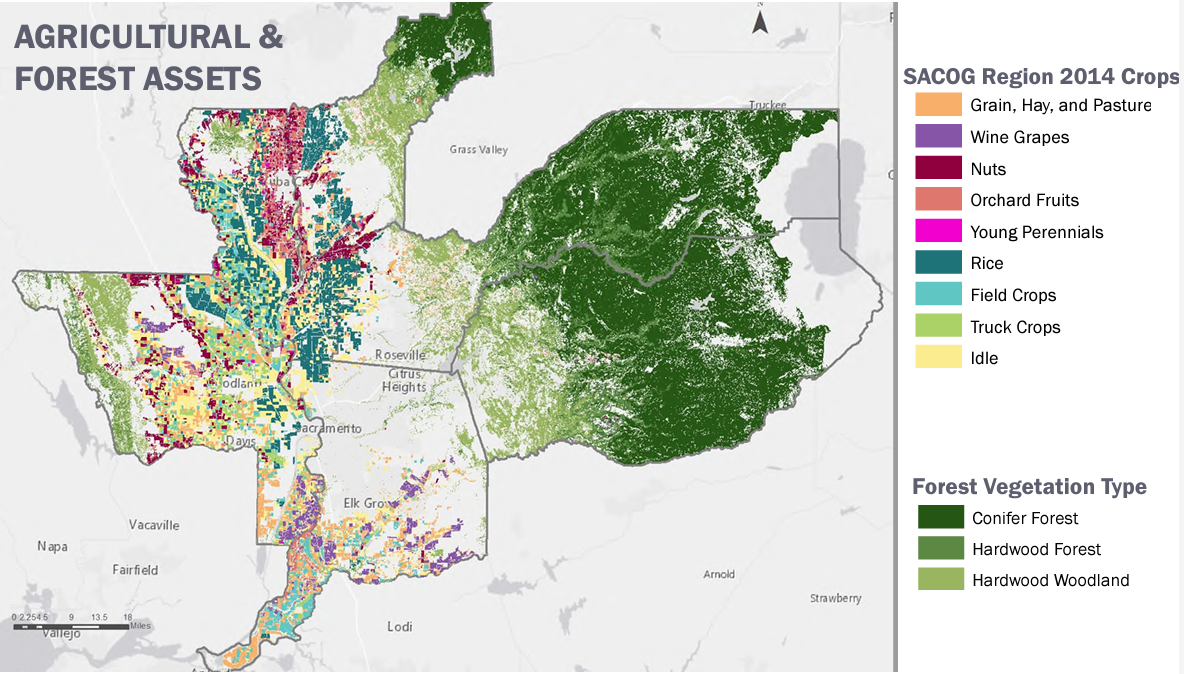
Source: Sacramento Area Council of Governments (SACOG) Rural-Urban Connections Strategy (2014)
There are three primary sources of biomass – biomass derived from municipal waste, biomass derived from agriculture, and biomass derived from forests. Agricultural biomass is agricultural waste, comprising food scraps, orchard trimmings, nut shells, and livestock waste. In the Central Valley, the agricultural industry is a leading economic driver, resulting in abundant and renewable agricultural biomass from farming operations as a continuously-generated resource. According to the California Department of Food and Agriculture in 2022, agriculture accounted for $55 Billion in economic activity, equating to tons of agricultural waste that either ends up in landfills or is discarded in open burning.
Why Ag Biomass?
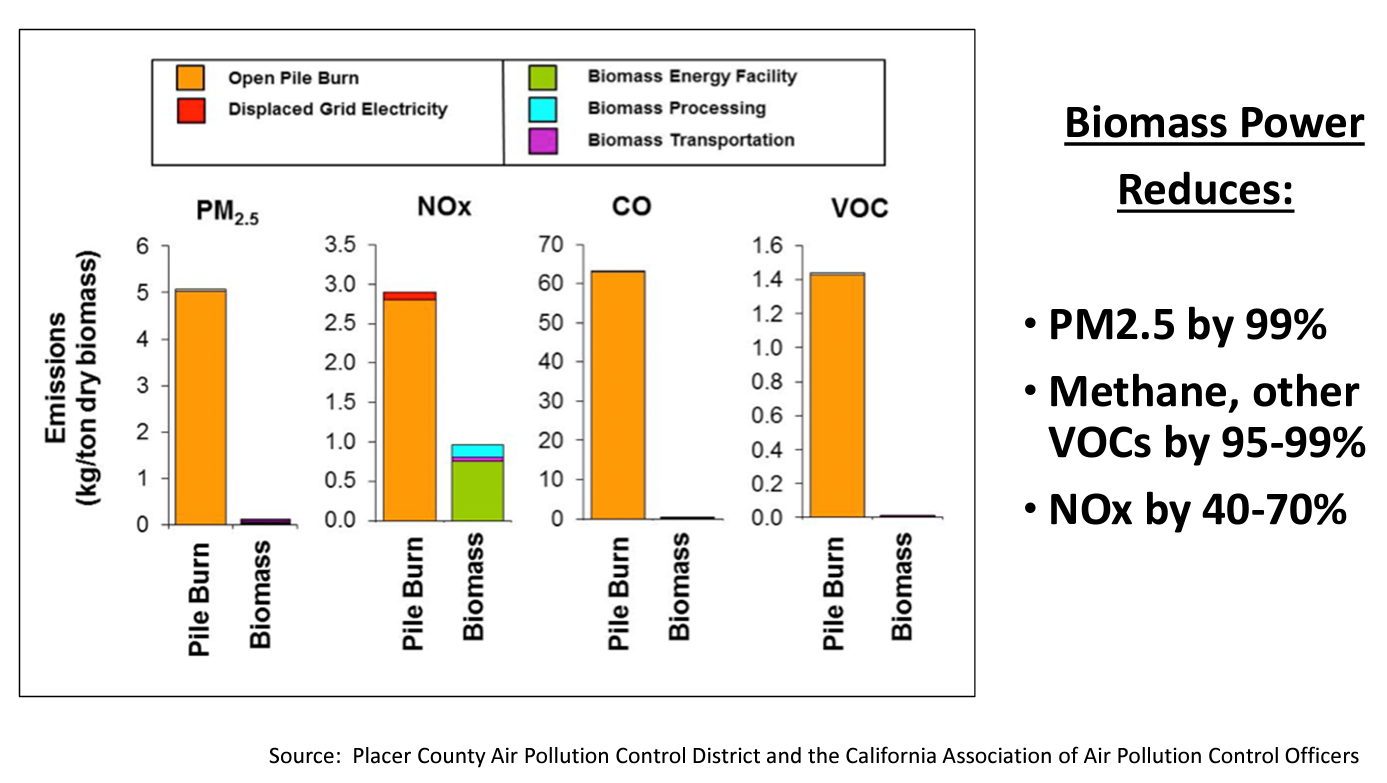
Adding to the abundance of agricultural biomass present in our local and regional economy, there is an increasing need to sustainably, economically and equitably manage this resource. At the conference in Winters, diverting agricultural biomass for alternative uses and associated benefits was discussed. Below are some key takeaways from the conference:
- Climate change impacts – the largest source of methane gas is from the agricultural sector, followed by landfills and the energy sector
- Open burning of agricultural biomass contributes to poor air quality through increased emissions and prevents our region from meeting state and federal air quality standards
- There is an increasing need for clean, renewable energy and fuel sources
- Open burn piles endangers residents and wildlife
- Benefits to agriculture include improved soil, plant health and water efficiency from compost and mulching applications
Envisioning a Future for Ag Biomass:
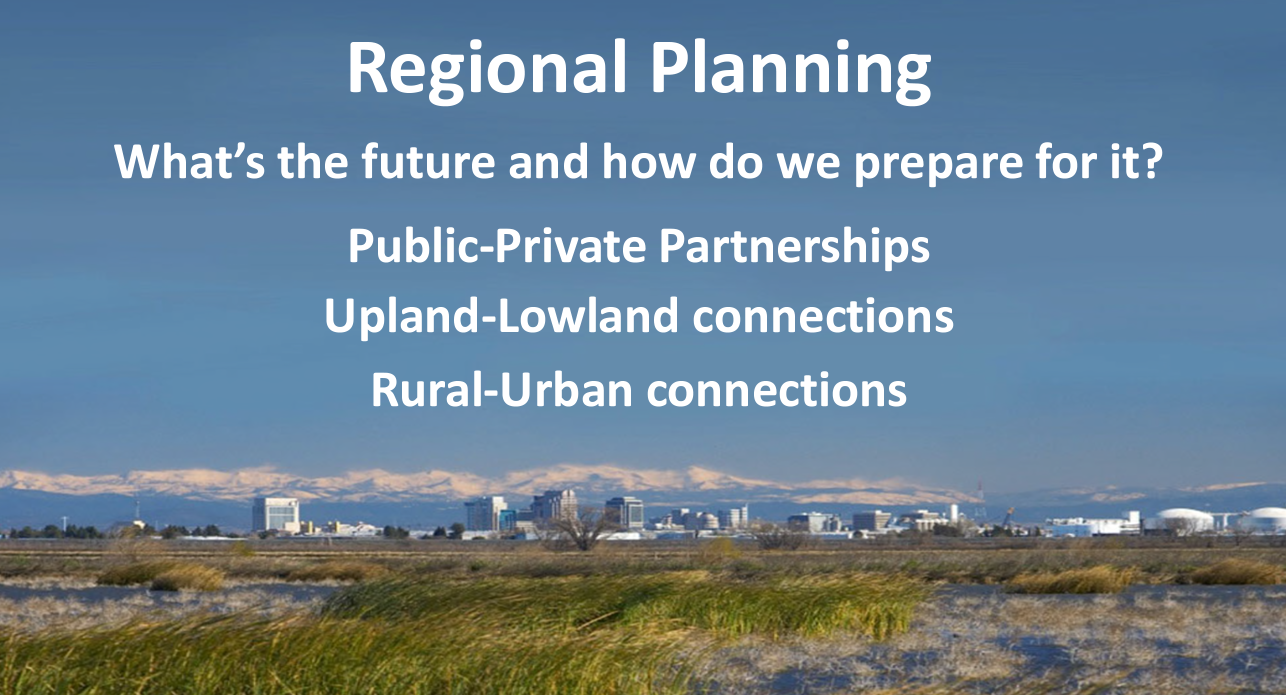
Source: Agricultural Biomass Conference in Winters, CA (Oct. 2023).
Notably, we are in the middle of a clean energy transition and biomass utilization plays a key role in this transition. Agricultural biomass utilization is a multi-benefit approach to managing agricultural waste and mitigating climate change impacts. It is a viable strategy that strengthens rural-urban connections and public-private partnerships, which is what we need in order to solve our region’s most pressing issues. Agricultural biomass should be branded as a value-added resource and not just waste that ends up in landfills or burned in open piles.
Currently, there is a high demand for renewable fuel sources as our state moves towards carbon neutrality and more modernized biomass facilities are much needed in our region. Modernized facilities are an opportunity for the agricultural industry, including local and regional governments and private sector interests to manage agricultural waste efficiently and sustainably, as well as provide valuable and marketable resources that support other sectors, too. The time to act is now as massive federal funding from the Inflation Reduction Act and the Infrastructure Investment and Jobs Act are coming our way. If we envision a more sustainable and resilient future, we must collectively get behind a solution and the opportunities for agricultural biomass must be put on the table.
Kathy Saechou is a Valley Vision Project Coordinator staffing the Clean Economy and Food & Agriculture Impact Areas.
West Coast’s Young Leaders Visit Farm-to-Fork Capital
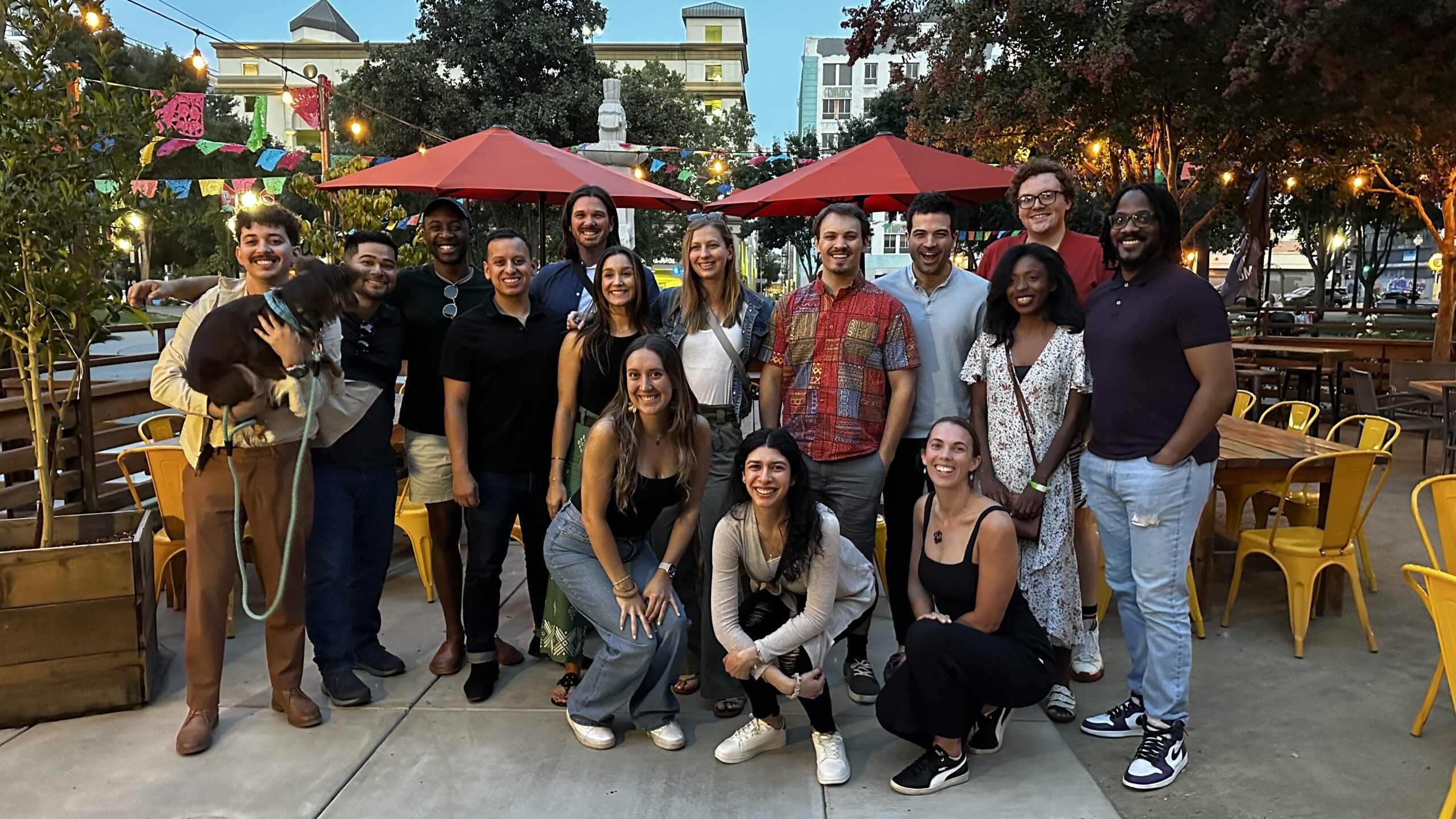
Flashback to Project Leader Adrian Rehn’s blog from five years ago: “Our team looks forward to harnessing this momentum, expanding our community partnerships, and doing another mind-blowing thing in the not-too-distant future.”
Five years and one pandemic later, the Sacramento Hub of the Global Shapers – the youth leadership network of the World Economic Forum – has done it again! From September 22-24th, Sacramento Hub members hosted young leaders from San Francisco, Oakland, and Phoenix for a weekend full of connection, impactful dialogue, and challenging preconceived notions while showcasing the best of Sacramento’s arts and culture.
Valley Vision has been the fiscal agent for the Global Shapers – Sacramento Hub for several years. Through this formal partnership, the Sacramento Hub has access to a high-performing and trusted local nonprofit that manages its finances and records, keeping things running smoothly. For Valley Vision, the Global Shapers bring a unique connection to the global community not found in other young leaders groups, which further boosts VV’s toolset in advancing the livability of the Sacramento region.
Sacramento: More than Just a Capital
The 2023 Global Shapers West Coast Retreat, as it was billed, was a revelation for many in that it shattered preconceived notions about Sacramento. While often seen only as just the capital of California, Sacramento proved to be much more. As Amy Vatcha, a San Francisco Global Shaper, put it:
“From the innovations in indoor farming & microgreens, to the art walks/art exhibitions/murals, to the salsa and bachata night at Dance on the Edge on the waterfront, I experienced the depth and variety of what Sacramento has to offer.”
Members of the Sacramento Hub were encouraged to shape the retreat based on their own connections to the city and their interests, including but not limited to:
- Guided tours of Sacramento’s many murals and art installations
- A private tour of the California State Capitol building
- A meet-and-greet with local urban agriculture leaders and entrepreneurs
- Salsa dancing lessons on the Old Sacramento Waterfront
- Leadership development sessions and cross-Hub skill-building
Connecting Young Leaders Beyond Boundaries
Beyond its role in showcasing Sacramento’s vibrant culture, the retreat emphasized the importance of connecting young leaders outside of their existing networks to think globally, and act locally. Adam Shipley, the Phoenix Hub’s curator, noted:
“Understanding perspectives across industries, demographics, and geographies helps us all create and maximize our community impact. [The] Sacramento Hub took the first proactive step in launching new dialogues.”
With this emphasis, the retreat underscored the significance of breaking down barriers and fostering a more holistic understanding of the challenges and opportunities facing our communities. It demonstrated that when young leaders unite with open hearts and minds, they can collectively address pressing issues and create a more interconnected, prosperous world.
Authentic Fellowship and Community Connection
Throughout the retreat, Shapers experienced the commitment to authenticity that has made the Sacramento Hub a long-lasting group. As Raphaël Tshitoko, San Francisco’s Vice Curator, put it:
“I can see how they’ve carefully nurtured their connection within their Hub, leading to genuine enjoyment of each other’s company, to how they’ve nurtured their connection to their community, intentionally creating spaces of togetherness but also being connectors by associating with and supporting leadership in their own neighborhood.”
Sacramento Hub members emphasized the importance of deep camaraderie rooted in shared values and experiences, where members actively nurture relationships within their group while also engaging passionately with their local community. This authentic bond goes beyond networking, fostering lasting connections and a sense of trust, unity, and shared purpose among its members.
Ultimately, the West Coast Retreat was a resounding success, leaving participants feeling optimistic and energized for their future involvement with their communities. The Sacramento Hub could not have pulled off this production without the help of our fantastic sponsors: Balanced Body, UC Davis Graduate School of Management, Councilmember Karina Talamantes, Revolution Winery, and our longstanding fiscal agent, Valley Vision.
To keep up with Valley Vision’s work to advance livability in the Sacramento region, subscribe to our Vantage Point email newsletter!
Building Our Inclusive and Prosperous Economy
Our region has a tremendous opportunity in front of us with the Community Economic Resilience Fund (CERF) to build an inclusive and prosperous economy for our region. Valley Vision, as the CERF Regional Convener, is leading a $5M planning process over the next year to grow a regional coalition that will identify, build, and advance equity-centered economic development opportunities in our eight-county region including Colusa, El Dorado, Nevada, Placer, Sacramento, Yolo, and Yuba counties.

In late June, we kicked off our summer-of-learning together for the coalition featuring Professor Manuel Pastor as our guest speaker for our first coalition-wide meeting. Professor Pastor encouraged us to follow three main guiding principles:
- Stop talking about “the economy” and start talking about “our economy”: We have ownership over many aspects of our regional economy and this is expressed in how we invest in people, education, communities, and more. Our economic conditions are built by us and we have the ability to build a human-centered economy.
- Treat people fairly and our economy will prosper – economies that reduce income, racial, and geographic divide disparities are able to sustain more economic growth and prosperity over time. Creating equitable opportunities for diverse people is not just morally right, it captures more talent and creates more prosperity and a better quality of life for all.
- To effectively disrupt the existing systems of power, we must expand the circle of belonging and invite those in who have been excluded. Doing this will surface tension and potential conflict – we can’t be afraid to face challenging conversations and social dynamics and need to build effective skills and systems within our coalition that will enable us to navigate these challenges.
The lessons that he imparted to us, as well as his walk-through of our region’s demographic and economic data that reflect opportunity and challenge areas for us, sets the stage for our regional coalition to understand and advance principles and approaches to inclusive economic development in the scope of the CERF process. You can find the recording and Professor Pastor’s slides here.
This webinar was the first in a monthly series that will bring in people and examples of inclusive and sustainable economy-building that can help inform and support our coalition as we get deeper into planning and working together as a coalition. Our next learning session is July 27th from 3-5 pm; stay tuned!
Valley Vision to Support New USDA Regional Food Business Center
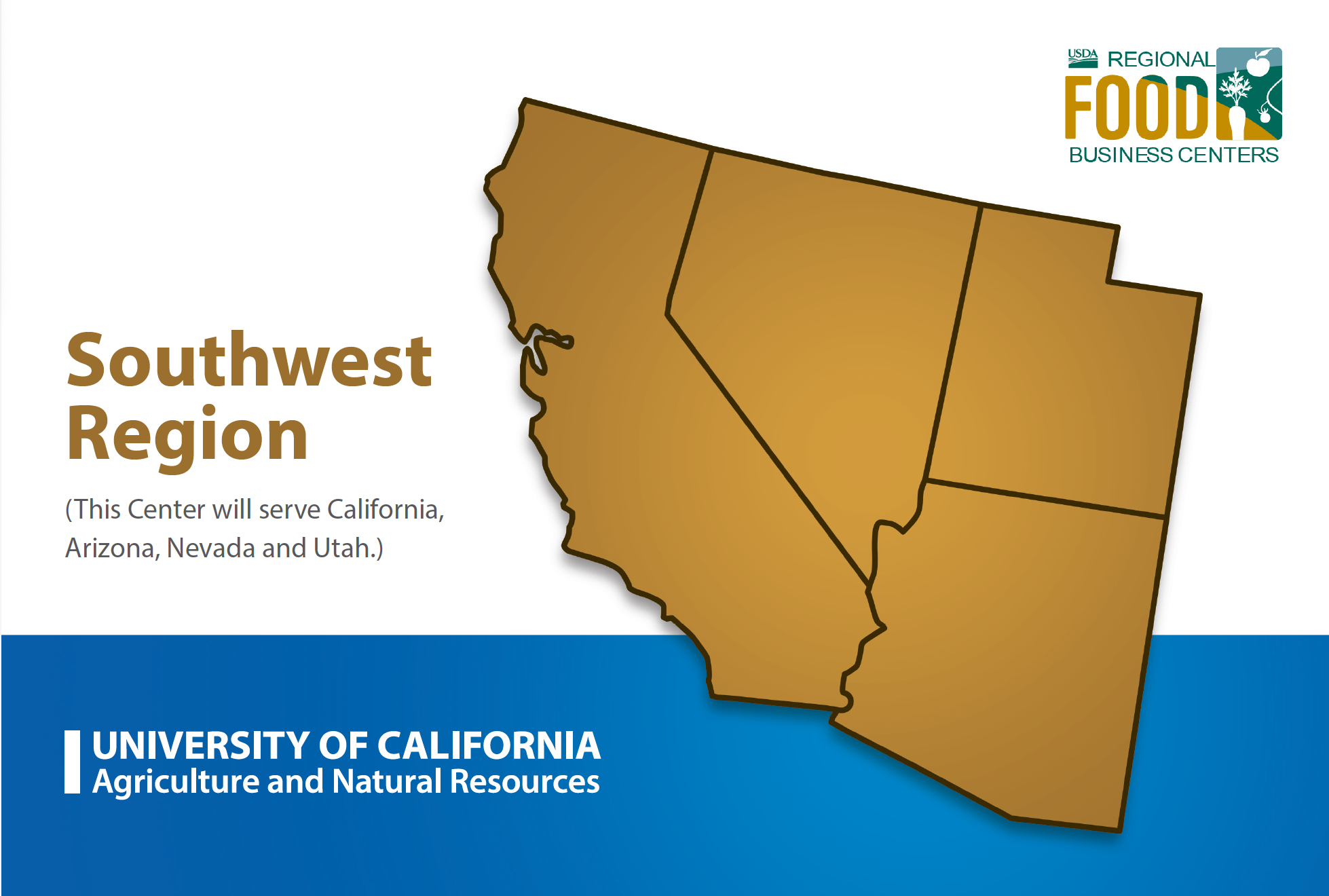
As announced earlier this month, Valley Vision is proud to be part of the new USDA Southwest Regional Food Business Center—one of 12 new Centers across the country that will support a more resilient, diverse, and competitive food system by providing assistance to strengthen local and regional supply chains. The University of California Agriculture and Natural Resources (UC ANR) is the lead applicant for the Center, and Valley Vision will serve as the Hub Director.
“The Regional Food Business Centers, along with investments through the Resilient Food Systems Infrastructure Program, will create new and expanded local market opportunities which will improve farm income, create good paying jobs and build greater resilience in our overall food system,” said Agriculture Secretary Tom Vilsack.
The Southwest Center covers California, Nevada, Arizona, and Utah. Tribal nations and Colonias Communities along the Southern border are also included. Through its network of partner organizations, the Southwest Center will conduct place-based technical assistance and capacity-building across this four-state region. The goal of the Center is to build a ‘coalition of coalitions’ that delivers multi-sector coordination efforts and business development programs to strengthen local producers’ economic viability, improve the supply chain’s resilience, and center equity in regional food systems.
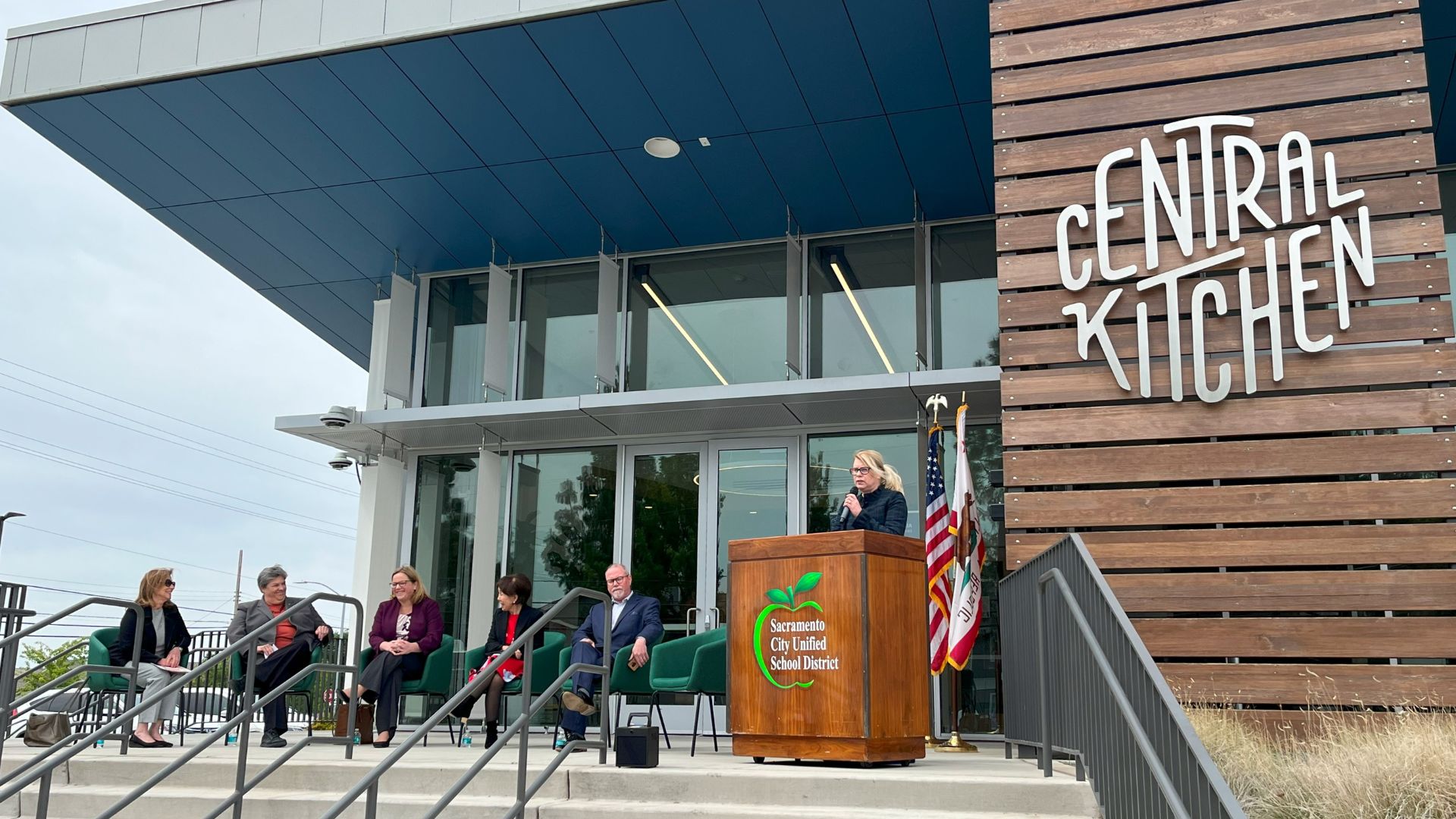
The Southwest Center was formally announced on May 3rd at Sacramento City Unified School District Central Kitchen. Valley Vision helped coordinate the event, which featured Jenny Lester Moffitt, Under Secretary of USDA Agricultural Marketing Service; Congresswoman Doris Matsui, (CA-7); Glenda Humiston, Vice President of UC Agriculture and Natural Resources; Sacramento Supervisor Patrick Kennedy and SACOG Board Chair; Diana Flores and Kelsey Nederveld from Sacramento City Unified Nutrition Services; and Trish Kelly, Managing Director, Valley Vision.
With local asparagus, potatoes, and grass-fed braised beef served out of the Central Kitchen’s Food Truck—showcasing how Fresh Food to School across the District is sourced from local farmers and prepared at the Central Kitchen—the event highlighted the strength of the local food system, including our diverse partnerships and networks that span across the Sacramento region, exemplifying the goals of the new Center.
The event concluded with a tour of the Central Kitchen, encompassing 50,000 SQ of warehouse space and 50,000 SQ of the facility itself. This tour was an opportunity to demonstrate the food system infrastructure we are building in this region, as well as the types of projects the Southwest Center will support.
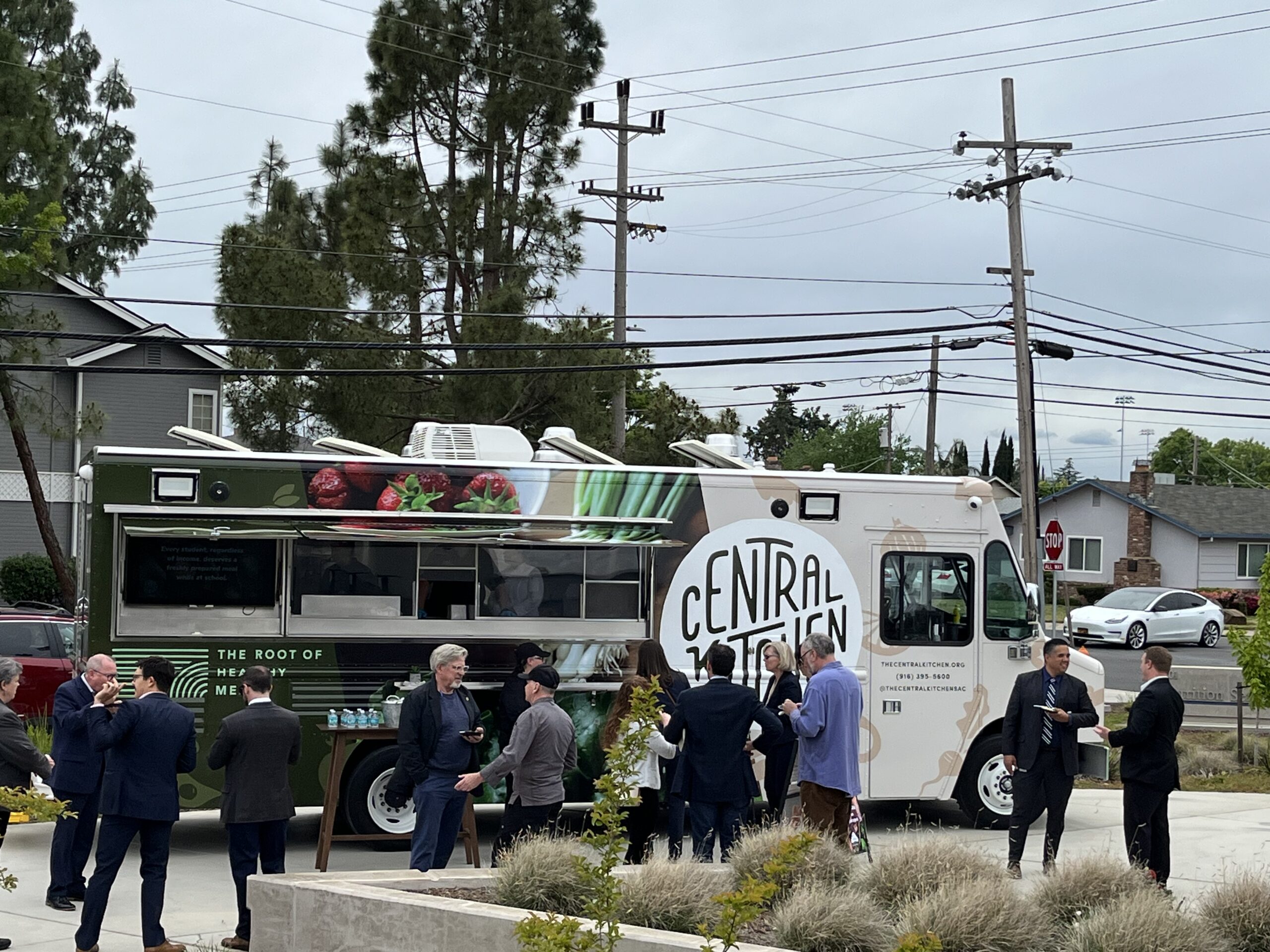
The Southwest Center and the Tour of the Central Kitchen would not be possible without the support of Secretary Moffitt, with whom we had the pleasure of meeting the week before during the 2023 Cap to Cap program; Congresswoman Matsui for being a champion for our region’s food system; Supervisor Kennedy, for his leadership that led to the development of the Central Kitchen; and Diana Flores and Kelsey Nederveld, who worked tirelessly to get the Central Kitchen operational. We are extremely grateful for the leadership of Glenda Humiston and her team in supporting diverse partners across the Southwest Region by anchoring the development and implementation of this project.
Trish Kelly will serve as the Director for the Center, supporting network coordination for outreach activities across the four states, development of community partnerships, and knowledge sharing. Grace Kaufman will support Valley Vision’s efforts, including managing stakeholder engagement, strategic planning, network coordination, outreach activities, and resource-sharing across the Southwest region.
The USDA grant will encompass five years and will contribute to Valley Vision’s capacity to serve as a backbone for the Sacramento region’s food and agriculture system. The project is anticipated to begin this summer.
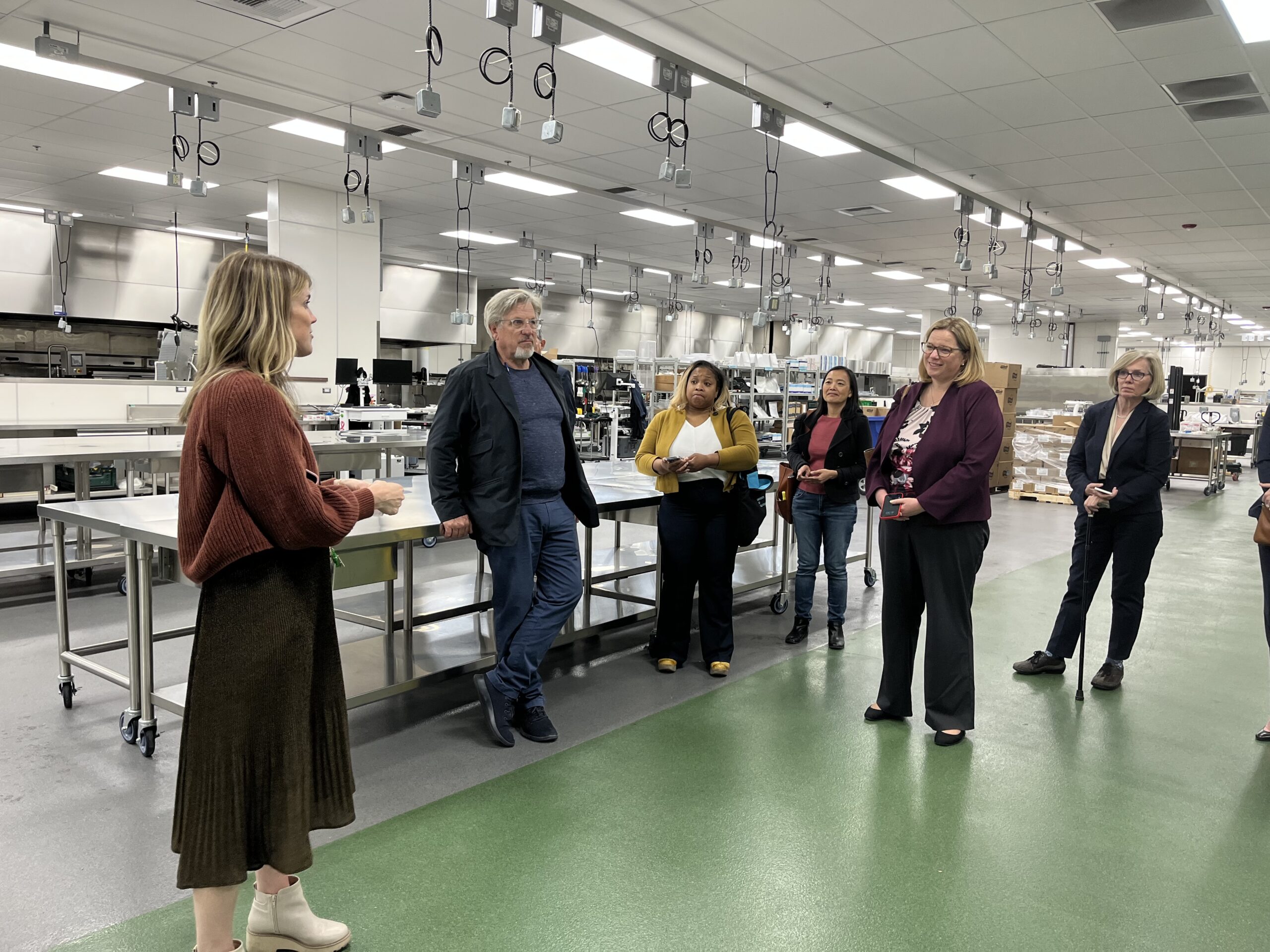
The Center’s network of Partners includes the California Department of Food and Agriculture (CDFA); California State University – Chico and Fresno; Occidental College; the Riverside Food System Alliance; the San Diego Food System Alliance; the University of California – Santa Cruz and Davis; Valley Vision; the Arizona Department of Agriculture; the Local First Arizona Foundation; the University of Arizona; the Nevada Department of Agriculture; the University of Nevada – Reno; the Utah Dept. of Agriculture; and Utah State University.
Center Collaborators include a wide network of organizations across the four states, including the Community Alliance with Family Farmers (CAFF); the Center for Good Food Purchasing; California FarmLink; Kitchen Table Advisors, Health Care Without Harm, and many others.
You can find more information about the program and the other Centers here: https://www.ams.usda.gov/services/local-regional/rfbcp.
To read more about the Sacramento Region’s food system projects and the work Valley Vision is supporting, go to WeAreFarmToFork.org.
If you’d like more information or to get involved with Valley Vision’s food and agriculture work, please contact us at FoodAndAg@ValleyVision.org.

A Federal Advocacy Agenda
Right now is a critical time to be engaged with the Federal government. There are once-in-a-generation resources available for the “big play” investments that our region needs to grow and thrive. Valley Vision has a long history of participating in our region’s annual Cap-to-Cap trip hosted by the Sacramento Metro Chamber.
This year we had leadership, or Co-Chair roles, on four teams (Air Quality, Economic Development, Food & Ag, and Workforce), and Trish Kelly, our Managing Director, served as Honorary Chair of the trip in recognition of her role in the region as a policy expert as well as her many years of Cap-to-Cap leadership. Our five Valley Vision staff who attended advanced our region’s sophisticated advocacy agendas; read about their experiences below.
Adrian Rehn
Each year, the Sacramento Metro Chamber puts together an excellent and well-regarded “Capitol-to-Capitol” Federal advocacy program – the biggest of any Chamber-led effort in the country. Attending the program is an enormous honor and privilege, with 407 participants this year, including 100+ freshmen and 100+ elected officials, and a whole lot of others with important leadership roles in our region. This year was no exception – the Chamber absolutely nailed the look and feel of the 2023 program.
The meat of the program is fast-paced advocacy meetings with our legislative delegation as well as committee and agency staff. The Cleaner Air Partnership, which Valley Vision staffs, leads one of twelve policy-focused “teams” dedicated to air quality. This year, our team elevated specific investments in Future Mobility projects like the ZEV Deployment Strategy and CA Mobility Center, and technical but extremely important policy fixes like letting air districts “write off” smoke from preventative prescribed fire instead of getting dinged by U.S. EPA. We are following up this week and next on these important “Asks” and look forward to continued engagement throughout the year as we continue to work toward cleaner air for all.

Grace Kaufman & Trish Kelly
Each year, Valley Vision’s participation in the Capitol to Capitol provides us an opportunity to advocate for the needs of the Sacramento Region on a national level. This year, the Food and Agriculture team was particularly impactful in highlighting the importance of the food system and the agricultural industry to the region’s economy and overall well-being. The team focused on the importance of supporting local food farms. ranches, food producers, nonprofits, food banks, restaurants, local governments, schools, hospitals, and businesses across the supply chain to ensure access to healthy, locally-sourced food for all. We advocated for improvements in the 2023 Farm Bill that would ensure access to critical programs that address food insecurity – a major challenge in our region – such as CalFresh. The discussions with our congressional delegation and agencies such as USDA and EDA provided the opportunity to highlight several of the region’s food and ag projects, focus on food as medicine, learn about new resources, and elevate our region as a place where all things food and ag are coming together through innovative and collaborative partnerships.
Over the course of five days, the program was an invaluable opportunity to engage with policymakers and advocate for programs that would benefit the region’s agricultural industry and ensure that everyone has access to healthy, nutritious, and local food. Meeting with congressional and administration leaders who are advancing the National Strategy on Hunger Nutrition and Health led to commitments to continue working together this coming year.
To read more about food and ag in the Sacramento region, check out our website at wearefarmtofork.org.
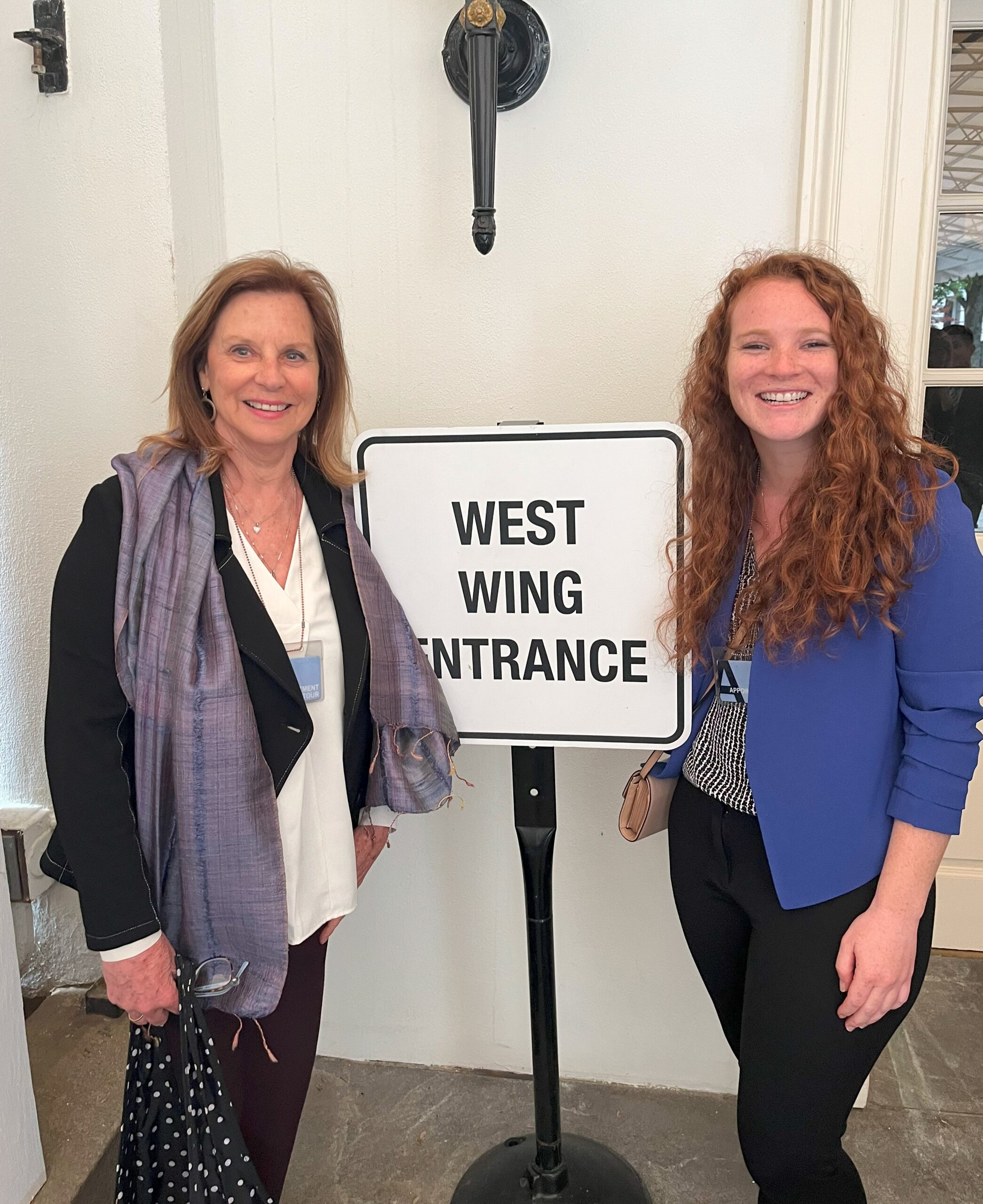
Trish and I also had the opportunity to tour the West Wing of the White House. It was my first time visiting Washington DC and seeing the historic building that has housed the world’s most powerful leaders was truly awe-inspiring.
During the tour, we were shown the various rooms and corridors of the West Wing, including the Oval Office, the Cabinet Room, and the Situation Room (and in case you’re wondering-yes, the vacuum lines are perfect in the Oval Office). The press room, a room that offers a glimpse into the inner workings of the media and the way news is reported from the White House, was a huge highlight of the tour for me.
Renee John
Participating in the Sacramento Metro Chamber’s Cap to Cap program provides a well-orchestrated vehicle for regional leaders to advocate in unison on important policy issues. In the area of workforce development, major federal legislation is currently in the reauthorization process. This includes the Workforce Innovation and Opportunity Act, which provides the most significant federal investment in workforce education and training programs. Additionally, the National Apprenticeship Act, which has not been reauthorized since 1937, is being shaped and expanded. Participating in meetings with congressional leaders and committees that design these and other legislation brings an opportunity to express what works well, and what is in need of adjustment from the folks doing the work on the ground.
I have found the folks in Washington to be very interested in our efforts in California, in the region, and particularly appreciate specific examples of how the components of legislation either benefit or constrain local efforts. This year also provided an opportunity to shine a light on collaborative efforts in workforce and education unique to California and the Greater Sacramento area.

Evan Schmidt
Cap-to-Cap not only enables our region to connect with federal representatives and agencies, but it also creates a concentrated space to connect with each other. Through team meetings, receptions, mixers, and plenty of informal gatherings our region goes to Washington to get things done in the Sacramento region. Key on my mind during the trip was inclusive economic development. Through the Economic Development team, we advocated for our key priorities from the Prosperity Strategy, timely investments in broadband infrastructure, support to build out our innovative ecosystem of entrepreneurs, and a continued emphasis on international trade that connects our businesses to the global marketplace.
With Valley Vision leading the regional Community Economic Resilience Fund effort, we are well-positioned to hone in on the ways that federal partners can help us leverage this state investment to amplify the impact. Our region is also exploring the ways that new legislation might help support regional economic goals. One example is the CHIPS and Science Act – a recent federal investment in high-tech manufacturing designed to strengthen manufacturing, supply chains, and national security. We found our federal partners to be responsive to our goals and we found many opportunities and alignments with them and among each other as we work to support thriving, equitable, and sustainable communities here at home.
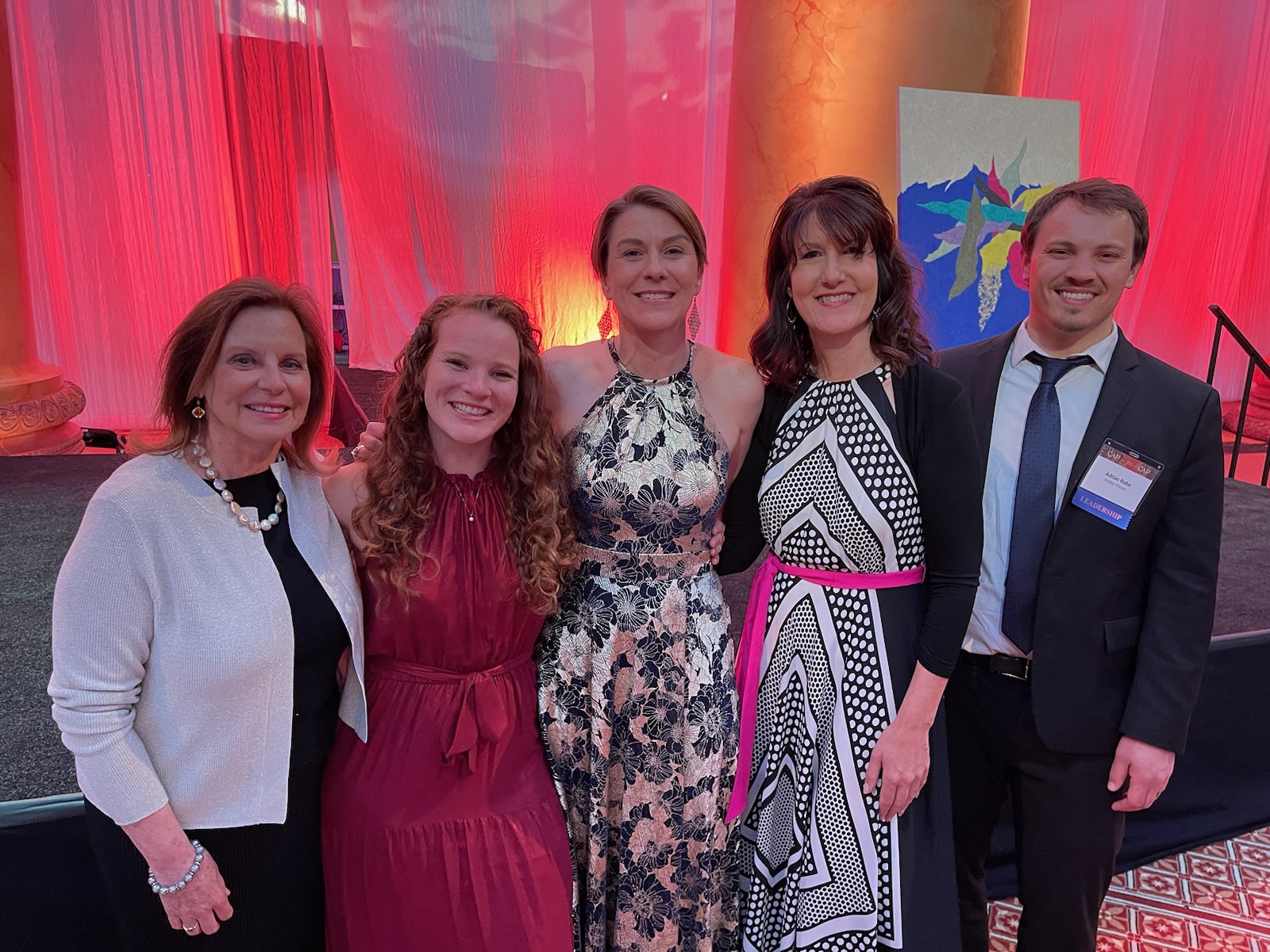
Introducing Erica Taylor, Valley Vision’s New Board Chair

Erica Taylor, Golden 1 Credit Union’s Vice President of Communications & Community Relations and the newly-appointed Valley Vision Board Chair, introduces herself and talks about her hopes for the organization in this exclusive Q&A.
Q: Can you briefly describe who you are, your background, and what led you to where you are now?
A: I serve as the Vice President of Communications and Community Relations at Golden 1 Credit Union. I’m going on my eighth year here, and I’ve lived in Sacramento for about 20 years. I’ve done similar work my entire time here as far as community relations, communications, and marketing-type roles, and I love it.
I grew up in Redding. I lived here very briefly as a child, so at least I was familiar with my I-99 and my I-5 versus my I-80 and my I-50. I was ahead of the game when we moved here, and it has absolutely become home. Both of my daughters were born here. My husband’s from Los Angeles and he likes it here. It’s not as sleepy as Redding, but not as busy as L.A., so Sacramento is just the best for us.
Q: What inspired you to want to come on to the board & what made you want to come onto leadership?
A: I’ve been on Valley Vision’s Board of Directors for five years now. With COVID, it feels like a lifetime ago. I would say I was inspired to join the Valley Vision board because of the organization itself. In my role, I was familiar with Valley Vision through the different kinds of work they’ve done in the community.
I always thought that they presented thoughtful ideas without an agenda. I always appreciated the independent thought that came from Valley Vision.
I wanted to come onto leadership because I think the organization is full of dedicated, smart people who are onto something to make this community better, and I wanted to be a part of that.
Q: What is a critical takeaway you learned from serving on Valley Vision’s board?
A: A critical takeaway I learned from serving on the board is that there are very thoughtful and bright people who are dedicated to making this region the very best it can be. The past couple of years have been really, really rough on all of us. The pandemic, the economy, the political kind of world we live in now—it’s different, and not the great type of different at times.
But I will tell you, each and every board meeting is filled with thoughtful conversations, filled with people who truly care. And it convinces me that we can do this. We can make things better. So, I’m always inspired. I always learn something new and it’s just a pleasure to work with everyone connected to Valley Vision, from the board to the staff.
Q: Bonus question! Do you have any recommendations for your favorite food and/or activities around Sacramento?
A: Favorite food or activity around Sacramento? Well, as a representative of Golden 1 Credit Union, I would be remiss if I did not mention the gem of a venue that we have downtown. I know it means something different to someone who works there, but it’s just very exciting to support all of the sporting events, concerts, and other fun things that pop up.
Beyond that, this is the best place on the planet to live for various other reasons. Growing up in Redding, I could be at a national park in 90 minutes. I could be at our little local ski hill in 50 minutes. I could be at a lake swimming or house-boating or skiing in half an hour. It was so great, and Sacramento is very much like that. It really has all the amenities of a bigger city, but recreation is just a heartbeat away. We are so fortunate for that.
As far as food—I can’t even narrow it down! There is such great food here, and I can’t pick one favorite.
Q: As Board Chair, what are your hopes for Valley Vision?
A:
My hope as Board Chair is to help us strengthen our efforts to lead positive change for our region in whatever way we can.
The future’s uncertain, but I still think it’s bright. And I still think this is the very best place on the planet to live. It’s the very best place to raise my family, and I can’t wait to see what’s next.
Maybe the best is yet to come.
Sierra Northern Railway & Partners Conduct Public Briefing on Zero Emission Switching Locomotive
Release Date: January 10, 2023

West Sacramento, California – January 5, 2022 – Sierra Northern Railway and partner Valley Vision conducted a public briefing of their Zero Emission Hydrogen Switching locomotive. This webinar had several hundred registrants and was viewed by participants in eight nations, a significant number of states and a large cross section of Federal, State and local regulators as well as a broad cross section of industry insiders.
The online briefing outlined how the Sierra Northern Railway Zero Emission Locomotive will be transformative providing essential services for America’s railroads by proving the hydrogen-fueled units capable of improving air quality, reducing greenhouse gas emissions, and increasing the quality of life in surrounding communities.
To view the briefing visit Valley Vision’s website: https://bit.ly/H2LocoProject or view it on YouTube: https://bit.ly/H2LocoWebinar
The Sierra Northern Railway unit will incorporate hydrogen fuel cells, hydrogen storage, and battery and control technologies that will clearly be more environmentally friendly than existing motive power.
“This is the right path for the future of zero-emissions motive power,” said Kennan Beard, president and CEO of Sierra Northern. “As the lead on this project, we’re confident hydrogen is here to stay and will be the true zero emission solution adopted by the State of California for Switching Locomotives.” By using hydrogen and batteries as Sierra has the switching locomotive will run without any emissions of NOx pollution, carbon or other particulate matter from the unit’s operation. When operational, this unit will stop using as much as 10,000 gallons of conventional diesel fuel per year. Sierra has a stated goal of having the first zero emission switching fleet in the nation and commercializing its technology to lead the industry into the zero-emission future.
Evan Schmidt, Valley Vision CEO stated, “we are very pleased to work with Sierra Northern Railway as they lead the locomotive industry to Zero Emissions within their own fleet, and over time as they commercialize hydrogen locomotives across the State, and ultimately throughout the Nation.”
Sierra Northern Railway (SERA) the technical lead, partnering with GTI Energy as the formal applicant to the California Energy Commission. Other technical partners are Railpower Tech LLC, Optifuel Systems LLC, UC Riverside Center For Environmental Research and Technology, Velocity Strategies, Valley Vision, Ballard Power Systems, WHA International, Southern California Gas Company, the Sacramento Metropolitan Air Quality Management District and The Low-Carbon Resources Initiative (LCRI).
# # #
Hopes for 2023
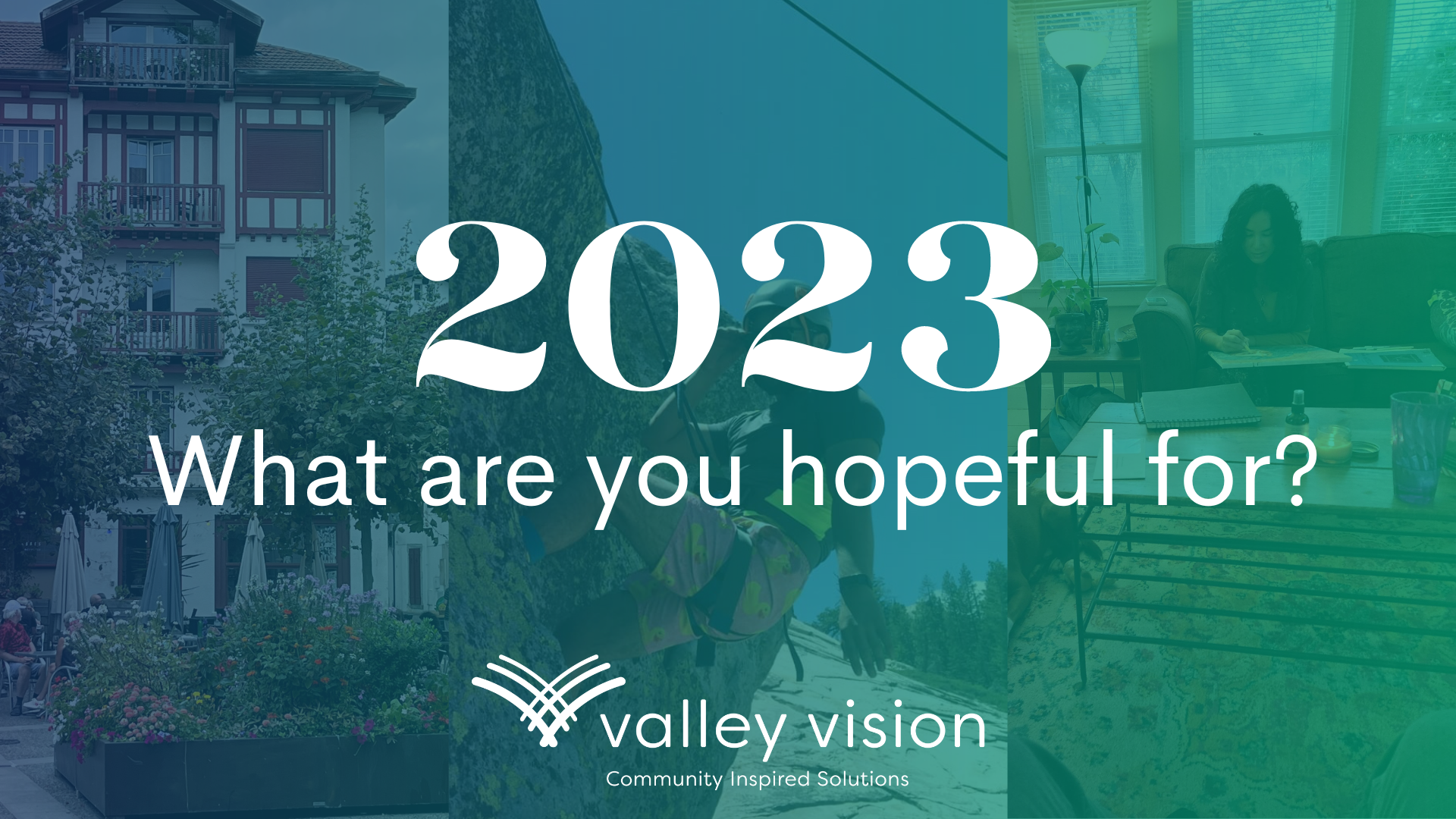
Welcome to 2023! A new year means new opportunities, so we asked our staff, “What is one thing you’re hopeful for?”
Thank you to all of our partners and community members who make our work possible; here’s to another year full of regional collaboration and positive change!
“In 2023, I’m hopeful for more quiet moments with wonderful people.”
Adrian Rehn
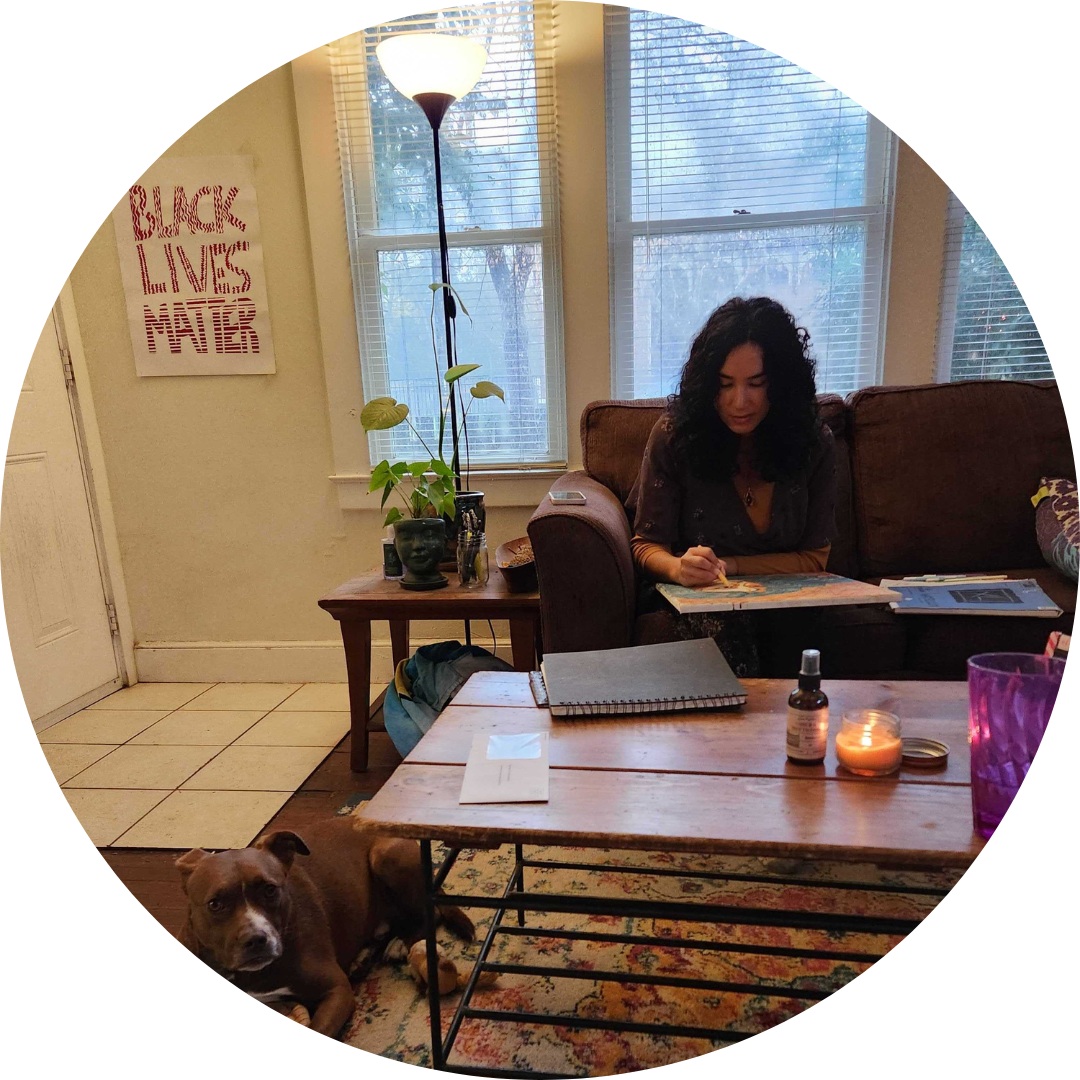
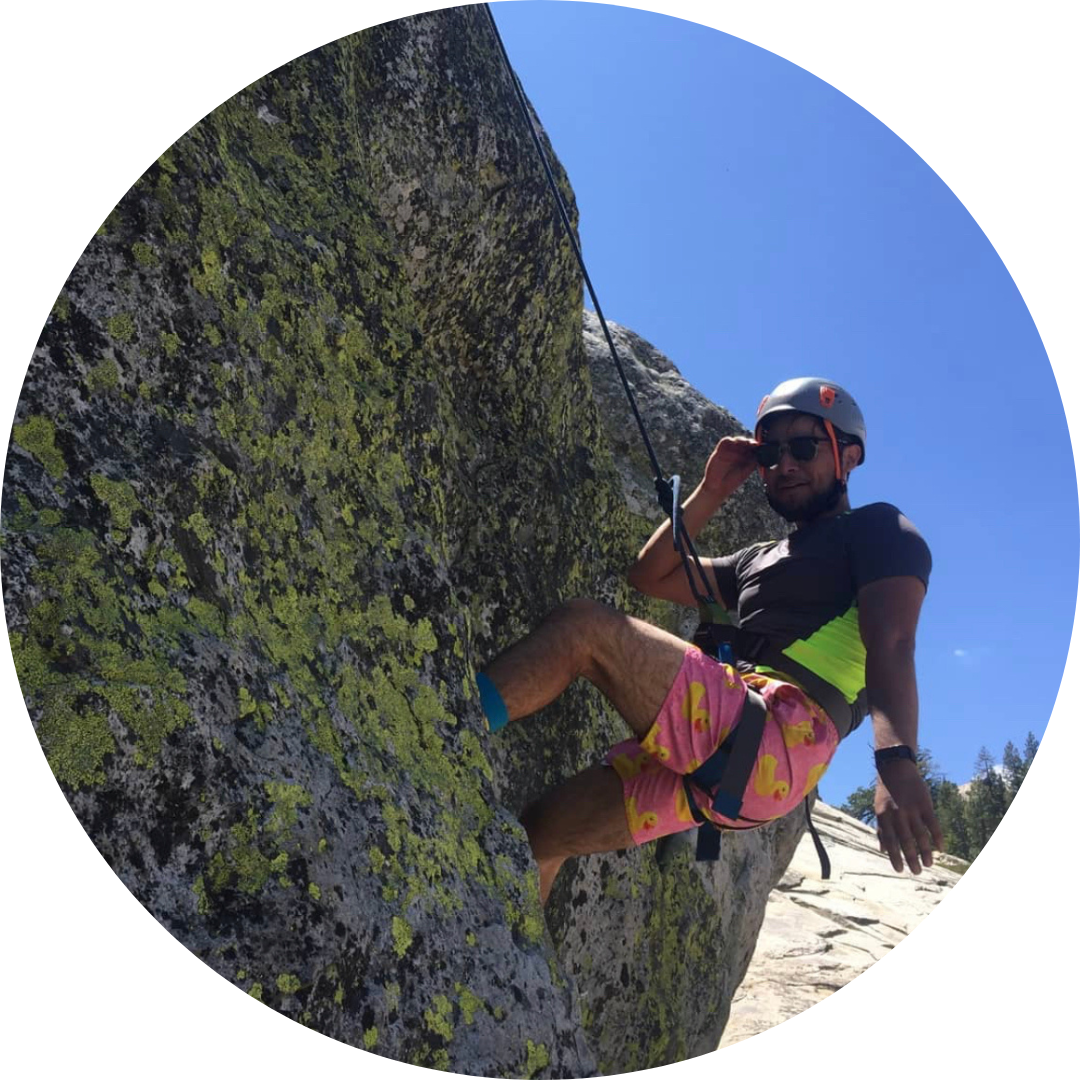
“I am hopeful for more opportunities to visit the great outdoors!”
Gustavo Garcia
“I am hopeful for more peace in the world globally, and personally, to spend more time with my two baby granddaughters!
Trish Kelly


“I’m hopeful for a healthier year for us all mentally, physically and emotionally.”
Brittnii Johnson
“I am hopeful for new experiences and opportunities to improve my mind, body & soul to live a healthier life in 2023.”
Laurel Smith


“With new data, opportunities, and funding coming to the region, I’m hopeful for the strides we’ll make in digital equity and broadband infrastructure to get communities connected!”
Navreet Hundal
“I am hopeful for a more inclusive and open world where all people feel belonging.”
Kathy Saechou


“I’m hopeful for a new year which brings stronger connections, impactful work, and good times for all!”
Caitlin Blockus
“I am hopeful for a year full of growth, time for myself & loved ones, and more quiet moments where I can appreciate the present!”
Danielle Susa


“I am hopeful for health, happiness, and well-being for my family, a Valley Vision team that takes on challenges together with curiosity and courage, and less violence and pain in our world.”
Evan Schmidt
“Wrapping up another pandemic year and a year where it seemed like everyone’s immune systems were reacclimating, I’m hoping for good health in 2023!”
Alana Ramsay
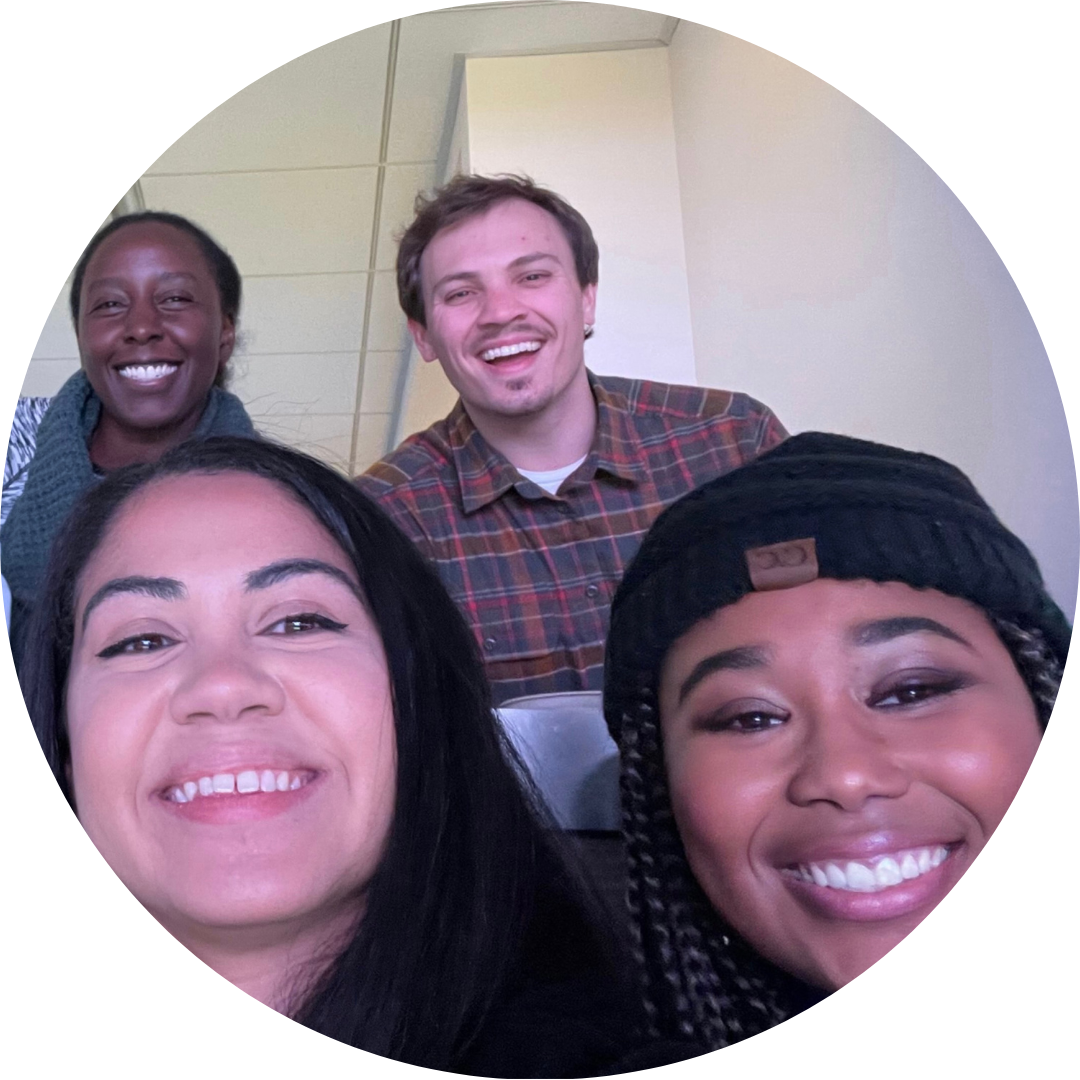

“I am hopeful for the fresh start a new year brings, and the opportunity to show up with renewed optimism, courage and aspirations.”
Renee John
“I’m hopeful for new experiences, adventures, food, and friends!”
Grace Kaufman

$3 Million Federal Investment to Boost Digital Inclusion in Lemon Hill

Sacramento State University, Sacramento City College, Valley Vision, and partners will pilot a innovative digital navigator program in the Lemon Hill community of South Sacramento.
Valley Vision is very pleased to partner with California State University, Sacramento, through the Capital Region Coalition for Digital Inclusion (CRCDI), in bringing nearly $3 million in federal funding to our region from the National Telecommunications and Information Administration (NTIA). NTIA, through its new, highly competitive Connecting Minority Communities Pilot Program (CMC), is funding Historically Black Colleges and Universities, Hispanic Serving Institutions and others across the U.S. to address pervasive digital exclusion in minority communities. This major investment will support digital equity in our region through the creation of the Sacramento Regional Consortium for Digital Equity, a collaborative of Sacramento State, Valley Vision, Sacramento City College, Cosumnes River College, and community partners to connect underserved communities with vital digital inclusion resources.
The Collaborative, led by Sacramento State, will develop a Digital Navigator Intern (DNI) program to serve the Lemon Hill community in Sacramento County. Through this program, students will be trained as Digital Navigators and deployed to Community Anchor Institutions working in Lemon Hill. Digital navigators are trusted guides who assist community members in internet adoption and the use of computing devices. Digital navigation services include ongoing assistance with affordable internet access, device acquisition, acquisition of digital skills, and application support. Sacramento State will also establish a Community Engagement Lab that will have essential software and equipment, will be staffed by the DNIs, and provide access for community training or open lab time for both the DNIs and community members.
Through the work of the CRCDI, the Lemon Hill neighborhood in Sacramento had been identified by the Sacramento Employment and Training Agency (SETA) as a priority underserved area based on demographic and economic indicators. This area has the highest poverty rate among communities in Sacramento County with populations of 10,000 or more, and became a focus for this grant. We are invigorated to take the efforts made by the CRCDI to the next level, working with Sacramento State, Los Rios and our community partners to bring digital navigators to our region. Dr. Robert S. Nelsen, President of Sacramento State, commented on this groundbreaking initiative:
“Sacramento State is thrilled that the NTIA saw the value in our proposal to help close the Digital Divide in Lemon Hill. As an Anchor University, we look forward to working with our partners, including Sacramento City College, the Greater Sacramento Urban League, La Familia Counseling Center, United Way, and Valley Vision to promote digital inclusion and improve broadband access. Our work will provide more families with access to broadband and a computer, increase educational attainment, and grow the neighborhood’s economy.” – Dr. Robert S. Nelsen
The project will launch in 2023. Digital navigators are essential to closing the Digital Divide, and we look forward to working with this team of digital inclusion trailblazers to establish transformational and lasting digital equity impacts in our community. With this pilot, led by Dr. Yvonne Harris at Sacramento State and a member of the CRCDI Steering Committee, we also have the opportunity to scale the CRCDI’s digital inclusion efforts, thanks to the support of NTIA. In addition, we thank the California Emerging Technology Fund which provided support in developing the application to NTIA, and is leading a Higher Education Collaborative for CMC grant recipients Sacramento State and Merced College and our evaluation partner, California State University, Chico. We also thank Congresswoman Doris Matsui for her valued ongoing support of our community’s digital inclusion efforts.
More information about this program can be found in press releases from NTIA and Rep. Matsui’s office.
###
About Valley Vision: For more than 25 years Valley Vision has used research to help governments, businesses, foundations and community groups better understand the issues facing our region. We believe that knowing and understanding the facts is the best way to establish a common working foundation for collaborative problem-solving. That’s why Valley Vision conducts, produces and interprets research including scientific public opinion polls, focus groups, community needs assessments, best practice studies and other research tools to bring to light the information local leaders need to improve our communities.